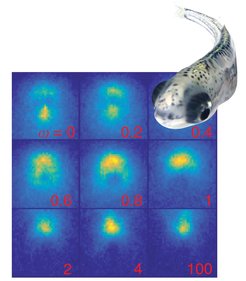Using Immersive Virtual Reality (VR) to Determine Causal Relationships in Animal Social Networks

Objectives: The application of Virtual Reality (VR) environments allows us to experimentally dissociate social input and responses, opening powerful avenues of inquiry into the dynamics of social influence and the physiological and neural mechanisms of collective behaviour. A key task for the nervous system is to make sense of complex streams of potentially-informative sensory input, allowing appropriate, relatively low-dimensional, motor actions to be taken, sometimes under conditions of considerable time constraint. ESR5 will employ fully immersive ‘holographic’ VR to investigate the behavioural mechanisms by which freely-swimming zebrafish obtain both social and non-social sensory information from their surroundings, and how they use this to inform movement decisions. Immersive VR allows extremely precise control over the appearance, body postural changes, and motion, allowing photorealistic virtual individuals to interact dynamically with unrestrained real animals. Similar to a method that has transformed neuroscience — the dynamic patch clamp paradigm in which inputs to neurons can be based on fast closed-loop measurements of their present behaviour — VR creates the possibility for a ‘dynamic social patch clamp’ paradigm in which we can develop, and interrogate, decision-making models by integrating virtual organisms in the same environment as real individuals. This tool will help us to infer the sensory basis of social influence, the causality of influence in (small) social networks, to provide highly repeatable stimuli (allowing us to evaluate inter-individual and within-individual variation) and to interrogate the feedback loops inherent in social dynamics.
Main adviser: Prof. Dr. Iain Couzin, MPI of Animal Behavior + University of Konstanz
